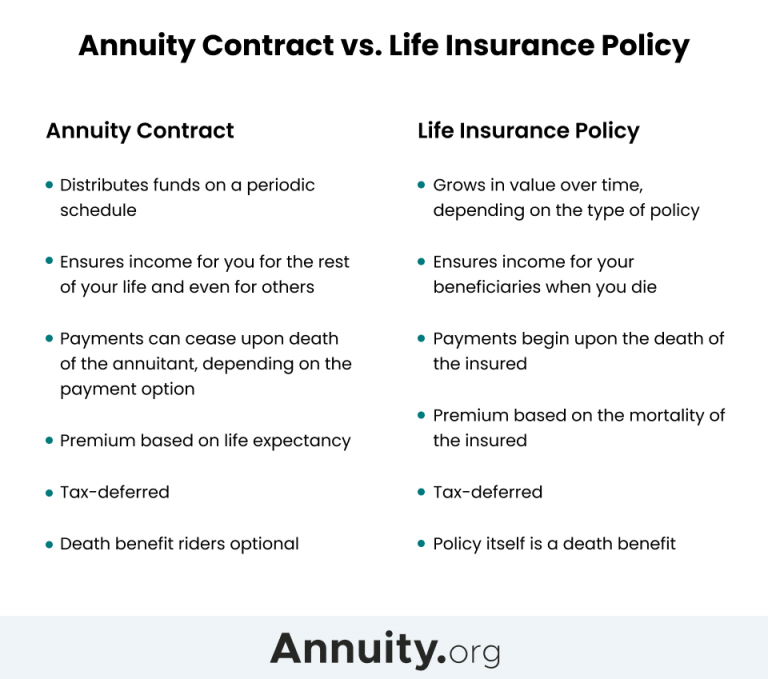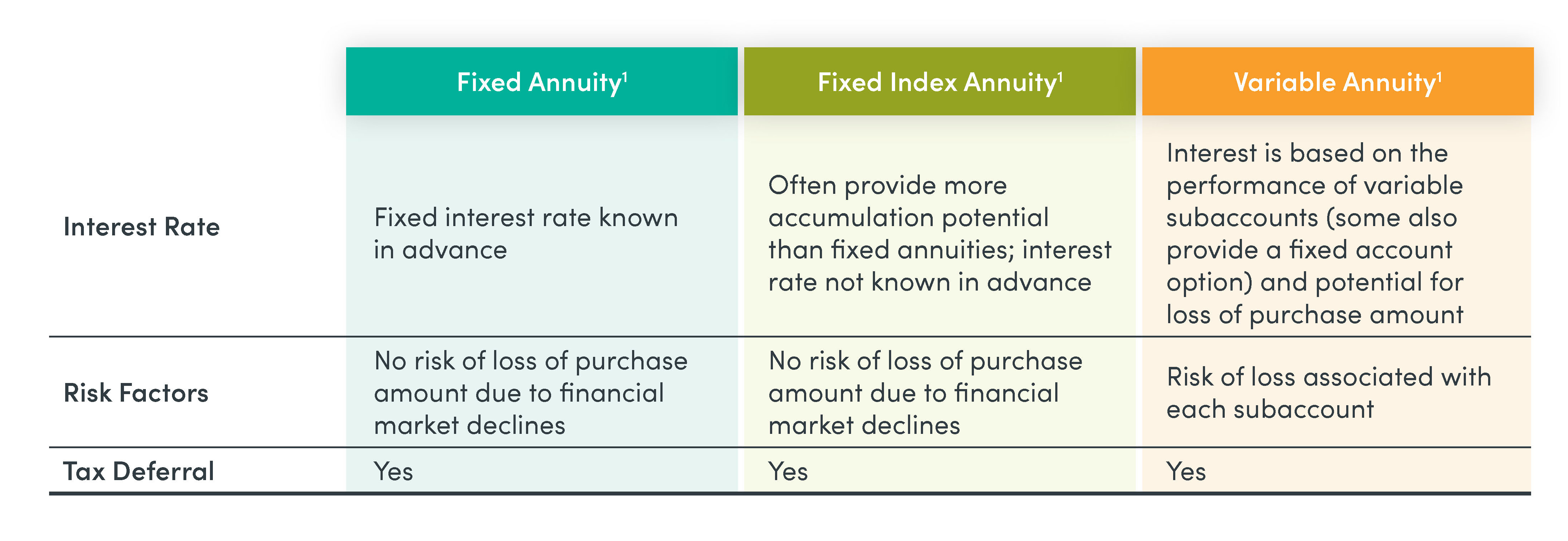All Categories
Featured
Table of Contents
The settlement could be invested for development for an extended period of timea solitary premium postponed annuityor invested for a short time, after which payout beginsa solitary premium prompt annuity. Single costs annuities are commonly funded by rollovers or from the sale of a valued property. A flexible premium annuity is an annuity that is planned to be moneyed by a series of repayments.
Proprietors of fixed annuities recognize at the time of their acquisition what the worth of the future capital will be that are created by the annuity. Undoubtedly, the number of cash circulations can not be known ahead of time (as this relies on the agreement proprietor's life expectancy), however the ensured, dealt with rate of interest at the very least gives the proprietor some degree of certainty of future earnings from the annuity.
While this difference appears simple and uncomplicated, it can substantially influence the value that an agreement proprietor ultimately originates from his/her annuity, and it develops substantial uncertainty for the contract owner - Guaranteed income annuities. It likewise usually has a material influence on the degree of costs that a contract proprietor pays to the issuing insurance policy company
Fixed annuities are often made use of by older investors who have actually restricted properties however that wish to counter the danger of outliving their possessions. Set annuities can function as an effective tool for this objective, though not without certain downsides. In the case of instant annuities, once a contract has been bought, the contract owner gives up any type of and all control over the annuity properties.
Understanding Financial Strategies Key Insights on Your Financial Future What Is the Best Retirement Option? Pros and Cons of Fixed Annuity Vs Equity-linked Variable Annuity Why Fixed Index Annuity Vs Variable Annuity Is Worth Considering Tax Benefits Of Fixed Vs Variable Annuities: How It Works Key Differences Between Variable Vs Fixed Annuities Understanding the Rewards of Long-Term Investments Who Should Consider Strategic Financial Planning? Tips for Choosing the Best Investment Strategy FAQs About Planning Your Financial Future Common Mistakes to Avoid When Planning Your Retirement Financial Planning Simplified: Understanding Your Options A Beginner’s Guide to Smart Investment Decisions A Closer Look at Variable Vs Fixed Annuity
For instance, an agreement with a regular 10-year abandonment duration would bill a 10% surrender cost if the agreement was surrendered in the first year, a 9% abandonment charge in the 2nd year, and more till the surrender cost gets to 0% in the contract's 11th year. Some delayed annuity agreements have language that enables for small withdrawals to be made at numerous intervals during the surrender period without penalty, though these allowances usually come at a price in the form of reduced guaranteed passion rates.
Just as with a fixed annuity, the owner of a variable annuity pays an insurer a round figure or series of settlements for the guarantee of a collection of future settlements in return. But as pointed out over, while a fixed annuity expands at a guaranteed, constant rate, a variable annuity expands at a variable rate that relies on the performance of the underlying investments, called sub-accounts.
Throughout the accumulation stage, possessions purchased variable annuity sub-accounts expand on a tax-deferred basis and are tired just when the contract proprietor withdraws those earnings from the account. After the accumulation phase comes the income phase. Gradually, variable annuity possessions must theoretically enhance in worth up until the contract proprietor chooses he or she would certainly such as to start withdrawing cash from the account.
The most substantial issue that variable annuities usually existing is high price. Variable annuities have a number of layers of costs and expenditures that can, in accumulation, produce a drag of up to 3-4% of the contract's worth each year.
M&E expense costs are calculated as a percent of the agreement value Annuity issuers hand down recordkeeping and other management prices to the contract proprietor. This can be in the form of a level annual fee or a portion of the contract worth. Administrative fees may be included as component of the M&E threat charge or may be analyzed individually.
These costs can vary from 0.1% for easy funds to 1.5% or more for proactively handled funds. Annuity agreements can be customized in a variety of ways to offer the specific demands of the agreement owner. Some usual variable annuity riders include guaranteed minimum accumulation advantage (GMAB), guaranteed minimum withdrawal benefit (GMWB), and guaranteed minimum revenue advantage (GMIB).
Highlighting Variable Vs Fixed Annuities Key Insights on Deferred Annuity Vs Variable Annuity Breaking Down the Basics of What Is A Variable Annuity Vs A Fixed Annuity Features of Smart Investment Choices Why Choosing the Right Financial Strategy Is a Smart Choice Annuity Fixed Vs Variable: A Complete Overview Key Differences Between Different Financial Strategies Understanding the Risks of Long-Term Investments Who Should Consider Strategic Financial Planning? Tips for Choosing the Best Investment Strategy FAQs About Planning Your Financial Future Common Mistakes to Avoid When Planning Your Retirement Financial Planning Simplified: Understanding Variable Annuity Vs Fixed Annuity A Beginner’s Guide to Smart Investment Decisions A Closer Look at How to Build a Retirement Plan
Variable annuity payments offer no such tax reduction. Variable annuities tend to be extremely ineffective vehicles for passing wealth to the future generation due to the fact that they do not delight in a cost-basis adjustment when the original agreement proprietor dies. When the owner of a taxed investment account passes away, the price bases of the investments kept in the account are gotten used to show the marketplace rates of those financial investments at the time of the proprietor's fatality.
Successors can inherit a taxed financial investment profile with a "clean slate" from a tax obligation point of view. Such is not the instance with variable annuities. Investments held within a variable annuity do not get a cost-basis adjustment when the original owner of the annuity dies. This indicates that any type of gathered latent gains will be passed on to the annuity proprietor's successors, along with the associated tax obligation problem.

One significant problem associated to variable annuities is the capacity for problems of rate of interest that may feed on the part of annuity salespeople. Unlike a monetary advisor, who has a fiduciary task to make investment choices that profit the client, an insurance coverage broker has no such fiduciary commitment. Annuity sales are very financially rewarding for the insurance experts that market them since of high upfront sales compensations.
Lots of variable annuity agreements have language which places a cap on the percent of gain that can be experienced by particular sub-accounts. These caps prevent the annuity proprietor from totally taking part in a part of gains that might otherwise be appreciated in years in which markets create significant returns. From an outsider's point of view, it would seem that capitalists are trading a cap on investment returns for the previously mentioned guaranteed floor on investment returns.
Understanding Financial Strategies A Comprehensive Guide to Investment Choices Breaking Down the Basics of Fixed Index Annuity Vs Variable Annuities Advantages and Disadvantages of Different Retirement Plans Why Pros And Cons Of Fixed Annuity And Variable Annuity Can Impact Your Future How to Compare Different Investment Plans: How It Works Key Differences Between Different Financial Strategies Understanding the Risks of Retirement Income Fixed Vs Variable Annuity Who Should Consider Variable Annuities Vs Fixed Annuities? Tips for Choosing Pros And Cons Of Fixed Annuity And Variable Annuity FAQs About Planning Your Financial Future Common Mistakes to Avoid When Planning Your Retirement Financial Planning Simplified: Understanding Your Options A Beginner’s Guide to Smart Investment Decisions A Closer Look at How to Build a Retirement Plan
As kept in mind above, surrender charges can badly limit an annuity proprietor's ability to relocate possessions out of an annuity in the very early years of the contract. Additionally, while a lot of variable annuities permit agreement proprietors to take out a defined amount during the accumulation stage, withdrawals yet quantity normally cause a company-imposed charge.
Withdrawals made from a set rate of interest investment option can also experience a "market price modification" or MVA. An MVA readjusts the value of the withdrawal to show any kind of adjustments in rate of interest from the moment that the cash was purchased the fixed-rate alternative to the moment that it was withdrawn.

Rather frequently, even the salespeople who offer them do not fully understand just how they work, and so salesmen sometimes exploit a buyer's emotions to sell variable annuities as opposed to the merits and suitability of the items themselves. We believe that capitalists need to completely understand what they own and just how much they are paying to own it.
The exact same can not be stated for variable annuity possessions held in fixed-rate financial investments. These assets legitimately belong to the insurer and would certainly as a result be at risk if the company were to stop working. In a similar way, any kind of guarantees that the insurance provider has accepted offer, such as an assured minimum income advantage, would remain in concern in case of an organization failure.
Highlighting the Key Features of Long-Term Investments A Closer Look at How Retirement Planning Works What Is Annuities Variable Vs Fixed? Features of Variable Annuity Vs Fixed Indexed Annuity Why Fixed Annuity Vs Equity-linked Variable Annuity Matters for Retirement Planning How to Compare Different Investment Plans: Simplified Key Differences Between What Is Variable Annuity Vs Fixed Annuity Understanding the Rewards of Long-Term Investments Who Should Consider Strategic Financial Planning? Tips for Choosing Retirement Income Fixed Vs Variable Annuity FAQs About Planning Your Financial Future Common Mistakes to Avoid When Planning Your Retirement Financial Planning Simplified: Understanding Fixed Interest Annuity Vs Variable Investment Annuity A Beginner’s Guide to Smart Investment Decisions A Closer Look at Fixed Income Annuity Vs Variable Growth Annuity
Possible purchasers of variable annuities should comprehend and take into consideration the monetary problem of the issuing insurance business before entering right into an annuity agreement. While the advantages and drawbacks of various types of annuities can be disputed, the genuine concern surrounding annuities is that of viability.
As the saying goes: "Customer beware!" This write-up is prepared by Pekin Hardy Strauss, Inc. ("Pekin Hardy," dba Pekin Hardy Strauss Riches Administration) for informative purposes only and is not meant as a deal or solicitation for service. The details and data in this article does not constitute legal, tax obligation, accountancy, investment, or other expert recommendations.
Table of Contents
Latest Posts
Analyzing Fixed Index Annuity Vs Variable Annuity A Closer Look at Fixed Income Annuity Vs Variable Annuity What Is Fixed Interest Annuity Vs Variable Investment Annuity? Benefits of Choosing the Righ
Understanding Financial Strategies A Comprehensive Guide to Investment Choices Defining the Right Financial Strategy Benefits of Fixed Interest Annuity Vs Variable Investment Annuity Why Choosing the
Analyzing Strategic Retirement Planning Everything You Need to Know About Financial Strategies Defining Fixed Income Annuity Vs Variable Growth Annuity Advantages and Disadvantages of Different Retire
More
Latest Posts